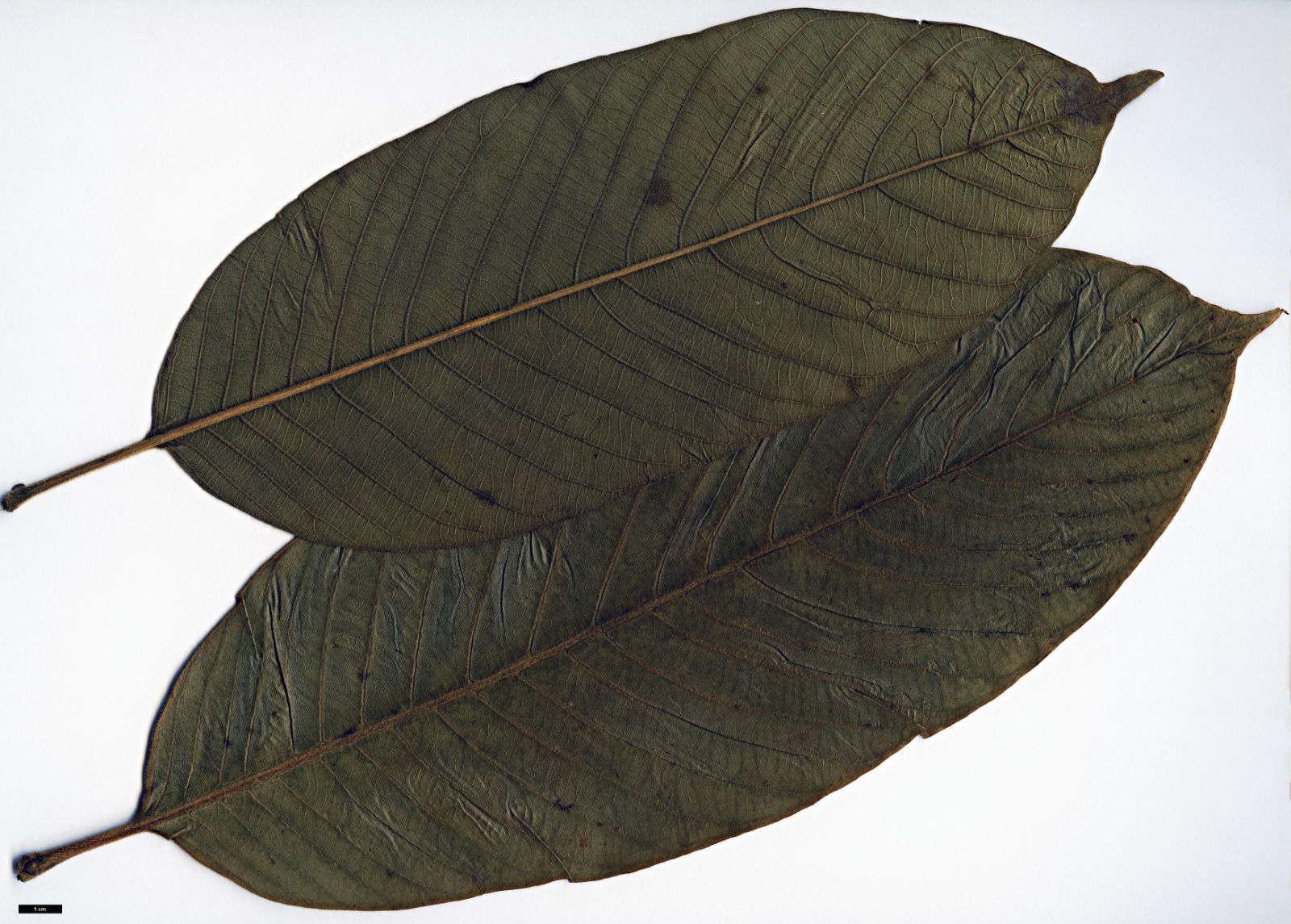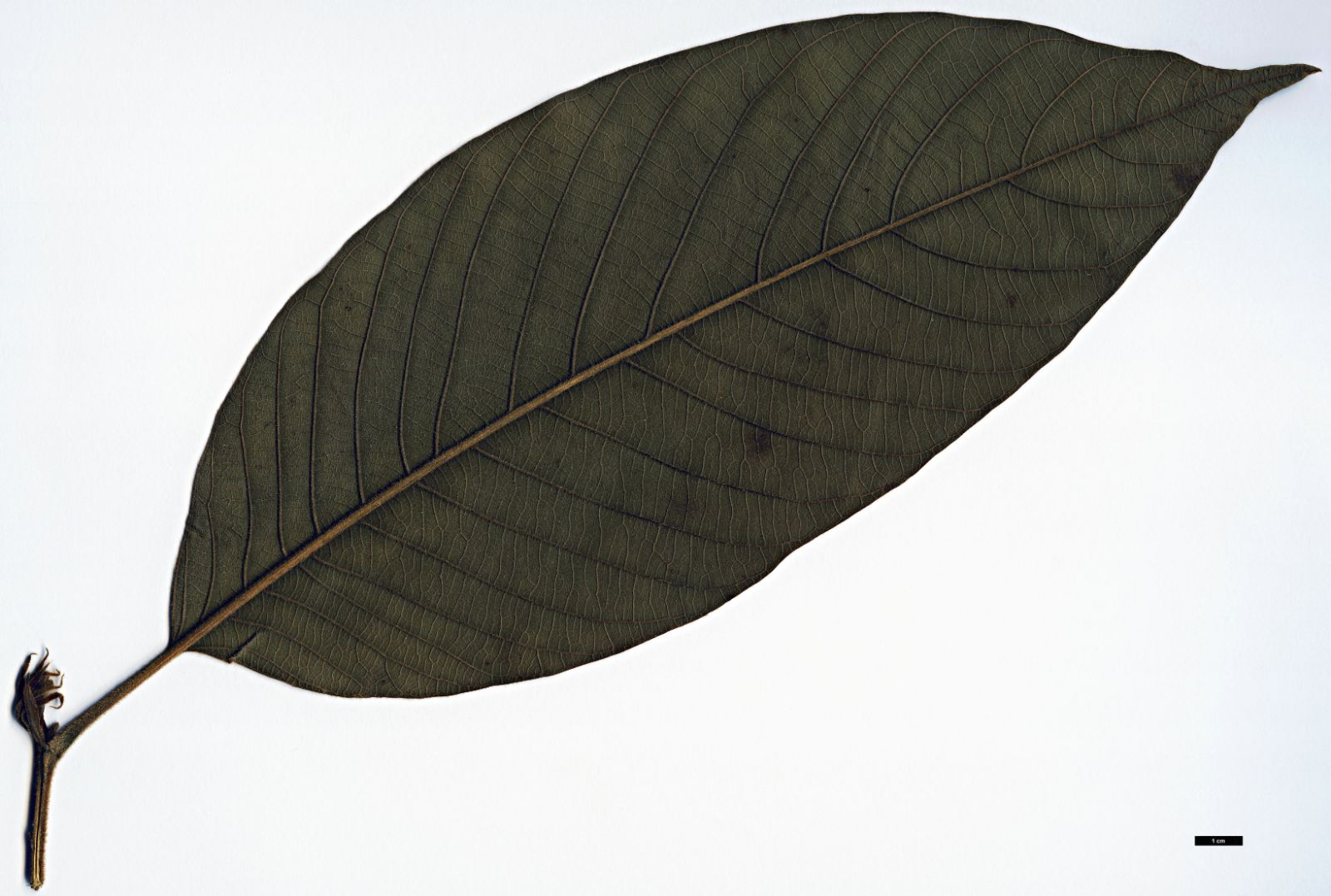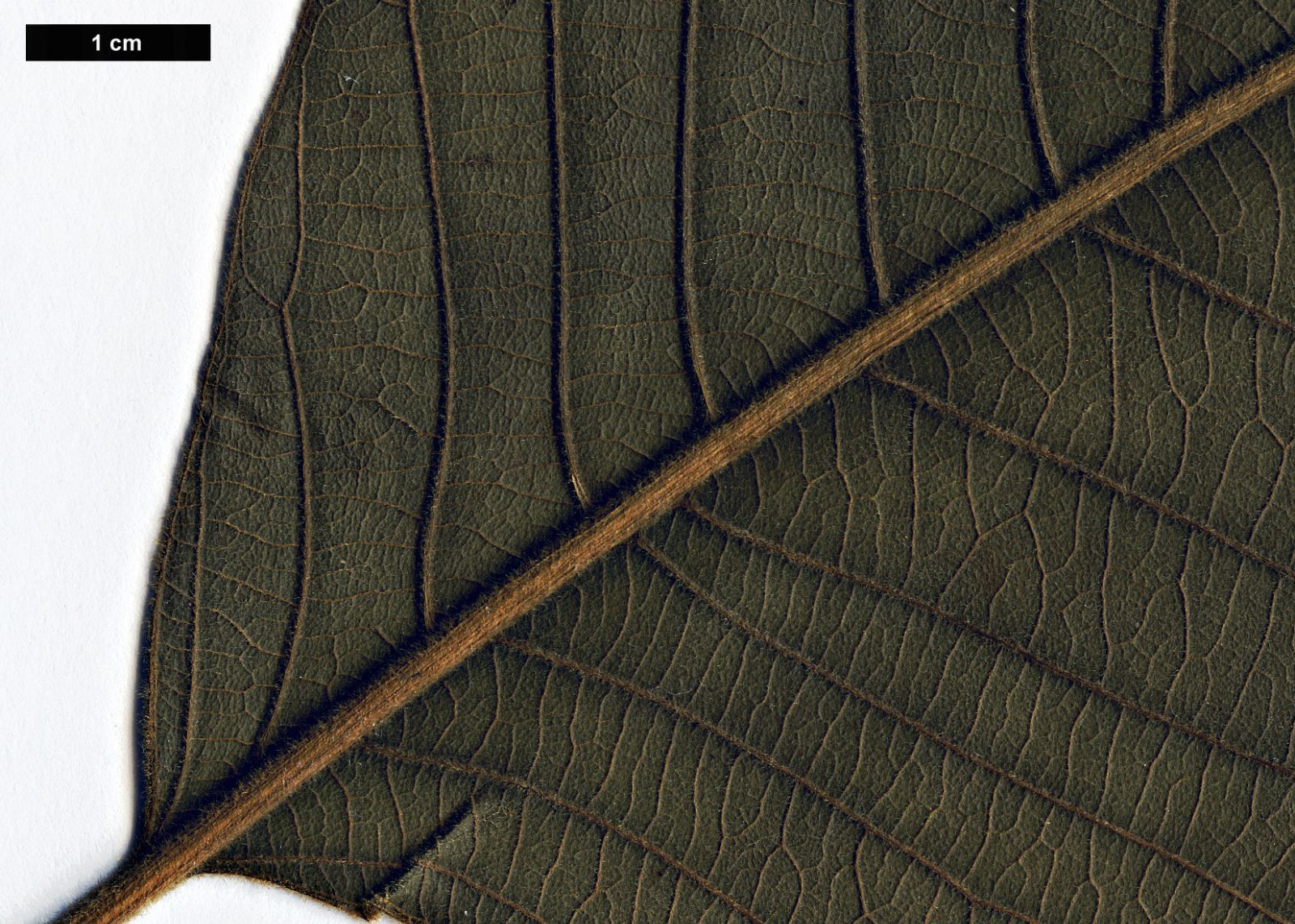Lithocarpus uvariifolius
Credits
Article from New Trees by John Grimshaw & Ross Bayton
Recommended citation
'Lithocarpus uvariifolius' from the website Trees and Shrubs Online (treesandshrubsonline.
Genus
Tree 10–15 m. Branches with large, prominent bud scars; branchlets densely covered with ferruginous tomentum. Leaves leathery or thickly papery, 9–22 × 5–10 cm, ovate to obovate or elliptic, upper surface glabrous, lower surface pubescent, concolorous, 25–35 secondary veins on each side of the midrib, margins entire, though becoming dentate towards the apex, apex rounded, obtuse, acute or shortly caudate; petiole 1–3.5 cm long, densely tomentose. Monoecious. Male inflorescences spicate, solitary in leaf axils, or clustered at branchlet apices; rachis densely tomentose. Female flowers solitary or in groups of three, borne at the base of the male inflorescences. Cupule cup-shaped to subglobose, 2–3.5 × 3.5–5 cm, densely covered with prominent bracts and scurfy indumentum; enclosing over half of the nut. Nut subglobose, pubescent, apex rounded, flat or rarely concave. Flowering May to July, fruiting October to December of the following year (China). Huang et al. 1999. Distribution CHINA: southwest Fujian, north and northeast Guangdong, Guangxi. Habitat Broadleaved evergreen forest, or in association with Castanopsis/Quercus subgenus Cyclo balanopsis or Pinus massoniana; between 200 and 800 m asl. USDA Hardiness Zone 9. Conservation status Not evaluated. Illustration Huang et al. 1999. Taxonomic note There has been some confusion between this species and the much more widespread L. corneus. According to Flora of China (Huang et al. 1999), the leaves of L. corneus are glabrous below, or have sparse hairs on the midvein and the axils of the lateral veins; the leaf margins are typically dentate; the petiole glabrous. Lithocarpus uvariifolius leaves are pubescent below; the margins are largely entire, with some teeth towards the apex; and the petiole is tomentose.
Lithocarpus uvariifolius has been in cultivation in the United States for many years, masquerading under the name L. corneus. David Fairchild recorded finding large, edible acorns of what he called Quercus cornea for sale in a market in Hong Kong in 1900 and sending these to the Plant Introduction Station (now the University of Georgia Bamboo Farm and Coastal Gardens), Savannah, Georgia (Fairchild 1941). There is still a specimen labelled Lithocarpus corneus there, but this may derive from an introduction from Hong Kong by F.A. McClure, in 1926. Several plants in this collection were identified as L. uvariifolius by Allen Coombes during a visit in 2000, and later confirmed as such by Prof. Zhekun Zhou of Kunming (Coombes 2001). Todd Lasseigne (pers. comm. 2006) reported that they were rather shrubby specimens, and believed that they had been damaged by periodic hard freezes (down to around –12 °C), that prevented them from attaining tree size.
On the eastern side of the Atlantic, L. uvariifolius has also been in cultivation for a long time, as evidenced by an old stump with regenerating shoots 3 m tall at Caerhays Castle, recorded by Owen Johnson in 2006 (Johnson 2007). Formerly labelled L. garrettianus, its identity was confirmed by Allen Coombes (pers. comm. 2008). Young seedlings are also currently in cultivation in the United Kingdom (C. Battle, pers. comm. 2007).





